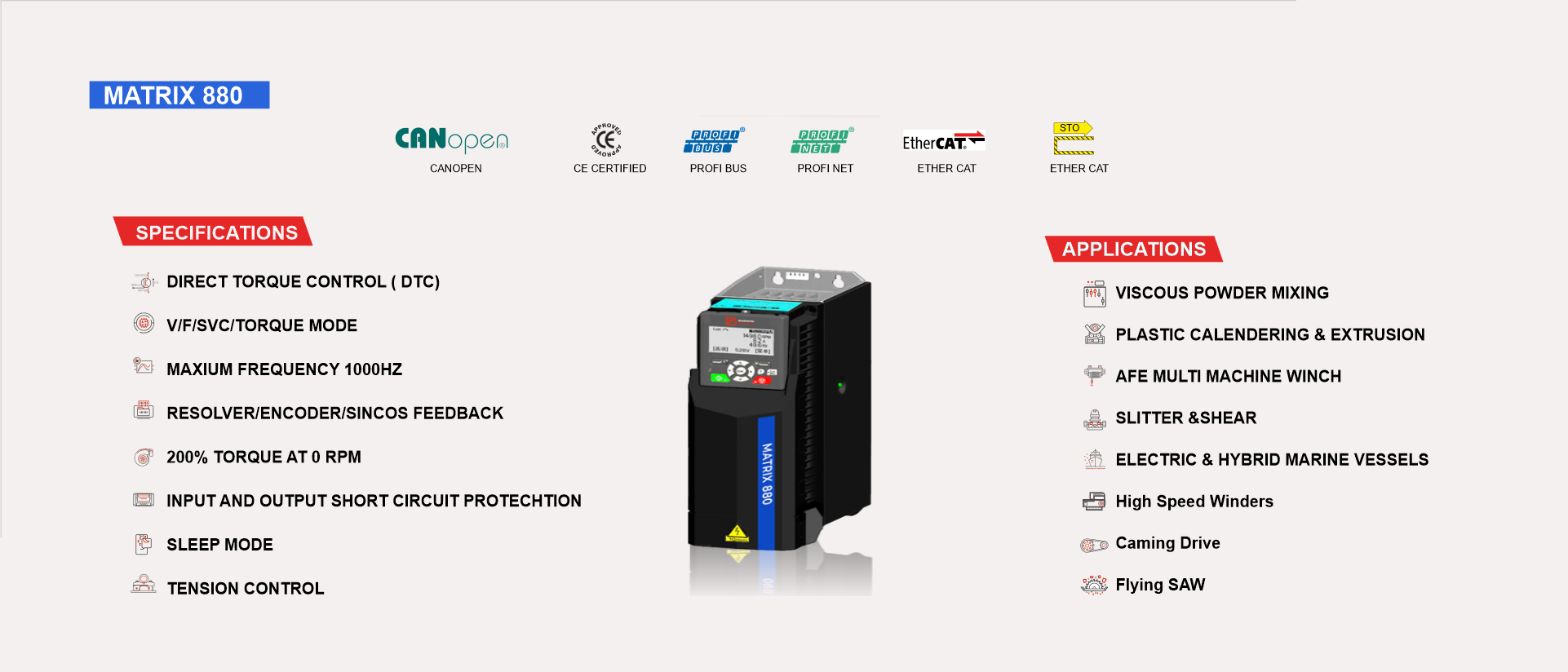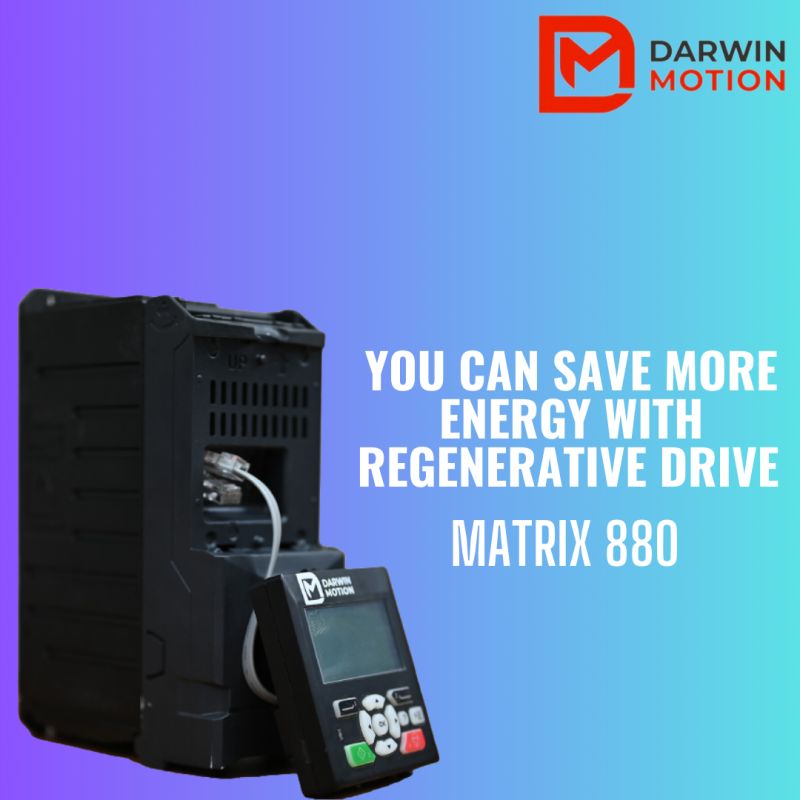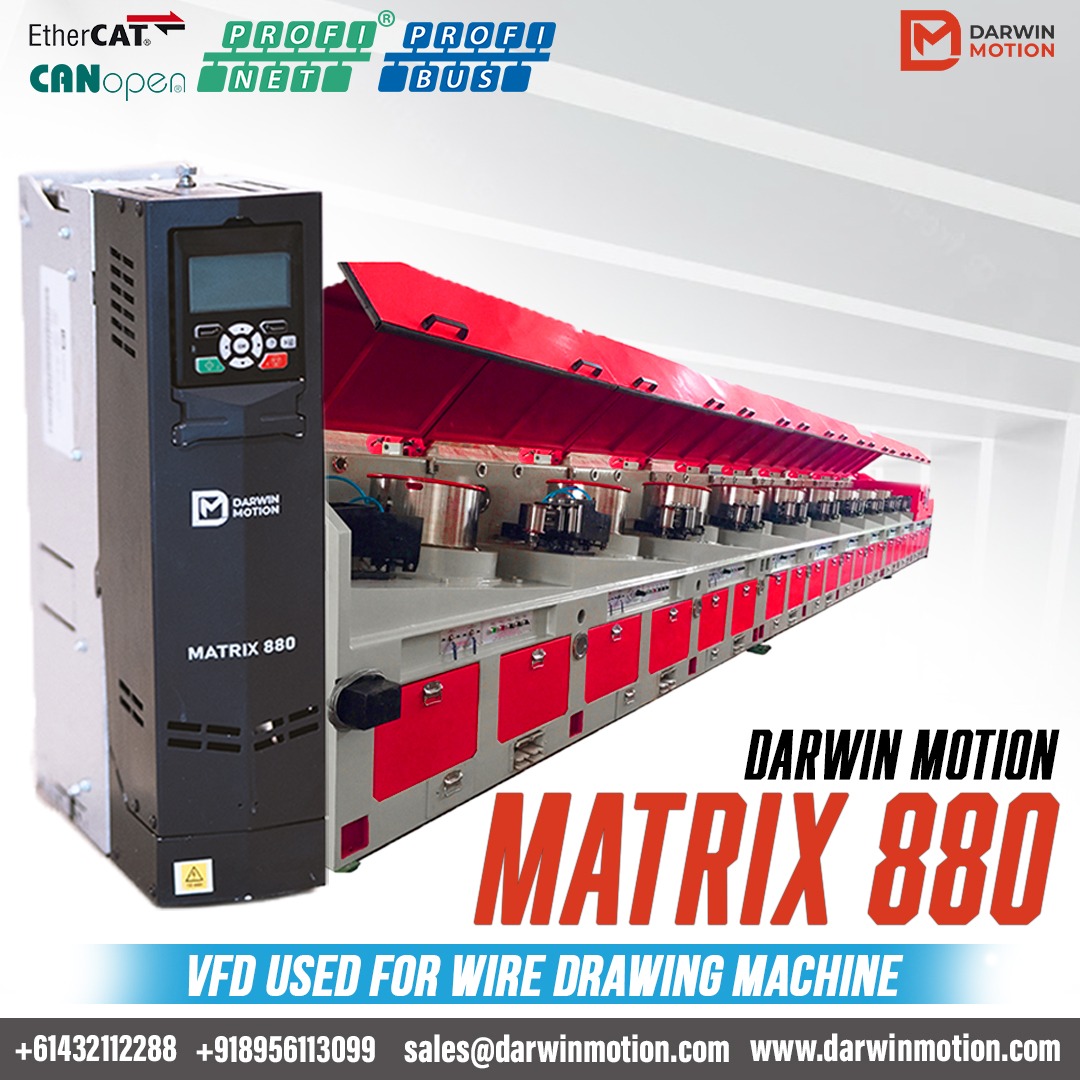Introduction
In the pursuit of efficiency and sustainability, Darwin Motion DR Matrix 880 regenerative drives have emerged as a transformative technology in the realm of industrial automation. These innovative drives offer the capability to convert kinetic energy into electrical energy during braking or deceleration, thereby reclaiming and recycling energy that would otherwise be dissipated as heat. In this article, we delve into the functionalities, advantages, applications, and future prospects of regenerative drives in driving forward sustainable industrial practices.
Functionality
Darwin Motion DR Matrix 880 Regenerative drives, also known as regenerative inverters or regenerative motor drives, are power electronic devices employed in motor control applications to regulate the speed and torque of electric motors while simultaneously recovering and reusing energy during deceleration or braking events. These drives utilize power conversion modules and control algorithms to convert the kinetic energy generated by the motor back into electrical energy, which can be fed back into the power supply or stored for later use.
During normal operation, regenerative drives control the motor's speed and torque by adjusting the frequency and voltage of the electrical power supplied to the motor. When the motor decelerates or brakes, the drive automatically switches to regeneration mode, directing the electrical energy generated by the motor back into the power supply or energy storage system. This process not only reduces energy consumption and operating costs but also enhances system efficiency and sustainability by minimizing wasted energy and reducing environmental impact.
Advantages:
The adoption of Darwin Motion DR Matrix 880 regenerative drives offers numerous advantages across a wide range of industrial applications, including:
- Energy Efficiency: Regenerative drives improve energy efficiency by reclaiming and recycling energy that would otherwise be dissipated as heat during braking or deceleration events, reducing overall energy consumption and operating costs.
- Cost Savings: By recovering and reusing energy, regenerative drives help to lower electricity bills and reduce the need for additional cooling systems or infrastructure to dissipate excess heat, resulting in significant cost savings over the lifetime of the equipment.
- Extended Equipment Lifespan: The regenerative braking capability of regenerative drives reduces mechanical stress on motors, brakes, and other mechanical components, leading to longer equipment lifespan and reduced maintenance requirements.
- Environmental Sustainability: Regenerative drives contribute to environmental sustainability by reducing energy consumption, minimizing greenhouse gas emissions, and conserving natural resources, aligning with corporate sustainability goals and regulatory requirements.
- Power Grid Stabilization: In grid-tied applications, regenerative drives can help stabilize the power grid by absorbing excess energy during braking events and returning it to the grid, improving grid reliability and resilience.
Applications of Regenerative drive:
Darwin Motion DR Matrix 880 Regenerative drives find application across a diverse range of industries and use cases, including:
- Elevators and Escalators: Regenerative drives are commonly used in elevator and escalator systems to control motor speed and direction while recovering energy during downward travel or braking events, reducing energy consumption and operating costs in high-rise buildings and transportation hubs.
- Cranes and Hoists: Regenerative drives are employed in crane and hoist systems to control the movement of loads while capturing and reusing energy during lowering or braking operations, enhancing efficiency and safety in material handling and construction applications.
- Electric Vehicles (EVs): Regenerative drives play a critical role in electric vehicle propulsion systems by recovering energy during braking or coasting and storing it in the vehicle's battery for later use, extending driving range and improving overall energy efficiency in automotive applications.
- Wind Turbines: Regenerative drives are utilized in wind turbine generators to control rotor speed and extract maximum power from wind energy while regulating grid interaction and capturing energy during gusts or sudden changes in wind speed, enhancing efficiency and stability in wind power generation.
- Industrial Automation: Regenerative drives are integrated into various industrial automation systems such as conveyors, pumps, fans, and compressors to control motor speed and torque while recovering and recycling energy during deceleration or braking events, optimizing energy usage and reducing environmental impact in manufacturing and process industries.
Future Prospects:
The future of Darwin Motion DR Matrix 880 regenerative drives is marked by ongoing advancements in power electronics, energy storage, and control algorithms, driving further improvements in efficiency, reliability, and functionality. Key areas of development and focus include:
- Energy Storage Integration: Integration of advanced energy storage technologies such as lithium-ion batteries, supercapacitors, and flywheel energy storage systems will enhance the energy storage capacity, efficiency, and cycling life of regenerative drives, enabling greater flexibility and reliability in energy management and grid interaction.
- Grid-Interactive Features: Regenerative drives will incorporate grid-interactive features such as power factor correction, voltage regulation, and frequency stabilization to enhance grid stability and reliability in renewable energy integration and microgrid applications, supporting the transition to a more resilient and sustainable energy infrastructure.
- Hybrid Energy Systems: Integration of regenerative drives with other renewable energy sources such as solar and wind power will enable the development of hybrid energy systems capable of capturing and utilizing multiple sources of renewable energy while optimizing energy efficiency and grid interaction in off-grid and grid-tied applications.
- Smart Control Strategies: Implementation of advanced control strategies and predictive maintenance algorithms will enable regenerative drives to adaptively optimize energy flow, maximize efficiency, and minimize operating costs based on real-time system conditions, load profiles, and energy market dynamics, enhancing overall system performance and reliability.
- Standardization and Interoperability: Standardization efforts such as IEC 61800 and IEEE 1547 will promote interoperability and compatibility between regenerative drives, energy storage systems, and grid infrastructure, facilitating seamless integration and deployment of regenerative drive solutions in diverse industrial and grid-connected applications.
Conclusion:
Darwin Motion DR Matrix 880 Regenerative drives represent a transformative technology with the potential to revolutionize energy efficiency and sustainability across industries and applications. With their ability to recover and reuse energy during braking or deceleration events, these advanced drives offer significant advantages in terms of cost savings, environmental sustainability, and grid stability. As the demand for clean energy solutions continues to grow, regenerative drives will play a pivotal role in driving forward the transition to a more efficient, resilient, and sustainable energy infrastructure, enabling businesses and communities to achieve their energy and environmental goals while enhancing competitiveness and resilience in a rapidly evolving global marketplace.
The Darwin Motion's Matrix 880 drive provides the Compact combination of power, ease of use, flexibility, and performance, Vector & Closed Loop Application. Easy to install & long life to cater Global Market..
Getting the perfect out of your working means doing more than just connecting a motor to electrical device part. You will even require a drive to work as an intermediary, controlling the power flow from the motor to the device and supporting harmless, more efficient outcome.
Getting the perfect out of your working means doing more than just connecting a motor to electrical device part. You will even require a drive to work as an intermediary, controlling the power flow from the motor to the device and supporting harmless, more efficient outcome.
There are different types of drive available such as ASDs, VSDs, and VFDs.
CHANGING THE MOTOR SPEED OFFERS NUMEROUS ADVANTAGES, INCLUDING:
- Better parts longevity
- Cut down operating costs since the motor does not require to work at full power all the time
SOFT STARTER DRIVES
As compare to VSD, VFD or ASD, a soft starter drive has a simpler set up, but it yet offers some control over the connection. These drives will normally implement a soft start that means they will slowly increase the motor’s output during start-up, cut down the stress applied on the motor during the operation phase and improve its working lifespan.
Across the Line and DOL (Direct On Line) Drives
Across the Line or DOL (Direct On Line Drives) is capable to maintain a stable, unchanging output from the motor. On different output levels there will be no control, no variation in speed, frequency or other functionality. This is quite simple system. However, it is even a less effectual one as the motor will be operating at full volume whenever it is turned on. Consequently, the system parts may experience more deterioration over time, and the system CO2 footprint get increased.
Take your time while selecting the VFD and match up the correct drive and motor combination to function your operation as competently as possible.


